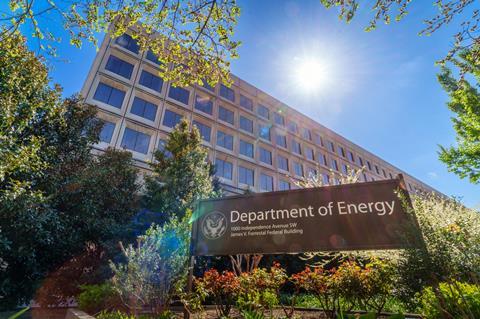The DOE had announced the cap last week to reduce the financial support it provides for research-related expenses like lab maintenance, management of hazardous materials, utilities and administrative staff. The move drew immediate legal action and criticism from the academic community.
The DOE's move to cap indirect research costs came two months after the US National Institutes of Health (NIH) issued a similar policy, which was blocked by a district court on 4 April. The judge in that case ruled that the NIH had violated federal statute, was 'arbitrary and capricious' in establishing the cap, didn't follow proper rulemaking procedures, and violated prohibitions against applying new rules retroactively. The NIH has filed an appeal aiming to overturn that permanent injunction.
The DOE's new policy, unveiled on 11 April, would actually go further than the NIH's policy by terminating all research grants the agency had awarded to higher education institutions that do not conform with the updated rule.
In total, the DOE allocates more than $2.5 billion (£1.9 billion) to fund research at more than 300 colleges and universities throughout the US. According to the agency, the average rate of indirect costs incurred by its grant recipients at colleges and universities is more than 30%. By halving the sum of money that it gives universities for these so-called 'facilities and administrative' (F&A) expenses, the DOE estimates that it will save more than $405 million annually.
'The purpose of Department of Energy funding to colleges and universities is to support scientific research – not foot the bill for administrative costs and facility upgrades,' stated DOE secretary Chris Wright.
Immediate and devastating
Within a few days of the DOE's announcement, several academic organisations sued the agency and Wright. The lawsuit was filed on 14 April, by the Association of Public and Land-grant Universities (APLU), the Association of American Universities (AAU) and the American Council on Education (ACE) alongside nine universities: Brown University, the California Institute of Technology, Cornell University, the University of Illinois, the Massachusetts Institute of Technology, the University of Michigan, Michigan State University, Princeton University and the University of Rochester.

Source: © J David Ake/Getty Images
The DOE's new rule cam into force on 11 April, but is being challenged through the courts
These academic groups describe the DOE rate cap policy as 'flagrantly unlawful' and argue that it would have an 'immediate and devastating' impact on critical research across the US. The organisations also worry that DOE's move would set a dangerous precedent that could be used to undermine government investments in research at many other federal agencies.
On 16 April, the Massachusetts district court issued a temporary restraining order to prevent the DOE from implementing the rate cap policy. The DOE has until 22 April to file an appeal.
The Council on Governmental Relations (COGR), a Washington, DC-based association of independent research institutes and affiliated medical centres, is also staunchly opposed to the agency's new 15% cap on F&A reimbursement.
'This is a ruinous policy. Our nation's economic competitors are laughing at another self-inflicted policy wound that will slow the pace of American research and innovation,' COGR's president Matt Owens said in a statement published in response to the new cap. 'First it was NIH. Now it is DOE. Bad policy is bad policy, and doubling down on it doesn't make it better.'
Chemistry World has learned that several of COGR's member institutions have already reported receiving notifications from the government that their active research grants and cooperative research agreements will be terminated if their institution does not accept the agency's new, lower 15% F&A reimbursement rate.

